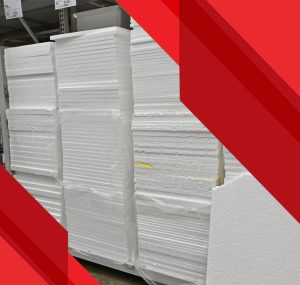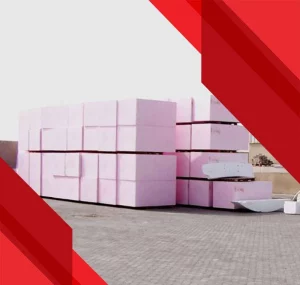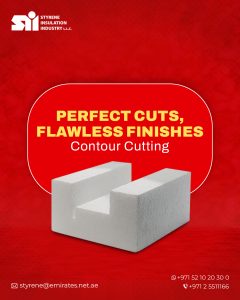Why Polystyrene Glue Is the Best Choice for Bonding Foam and Plastic Materials
In the world of construction, crafts, and packaging, choosing the right adhesive can make all the difference. Polystyrene glue — a specialized adhesive designed for foam, plastic, and lightweight materials — has become the preferred option for professionals and DIY users alike. Known for its strong bond, quick drying time, and safe formulation, this glue provides a reliable solution for joining delicate materials that regular adhesives can easily damage.
This article explores why styrene adhesive is considered the best adhesive for foam-based applications, how it works, and why it remains a trusted choice across industries.
What Are Polystyrene Glues and How Do They Work?
Polystyrene glue is a unique adhesive specifically formulated to bond materials made of polystyrene — including foam boards, plastic panels, and craft materials. The glue works by gently softening the surface of the material, allowing both sides to fuse together as it dries. This creates a firm, long-lasting connection without melting or deforming the foam.
The composition of this glue allows air to remain trapped in the foam structure, ensuring it retains its shape while the adhesive sets. Whether used with expanded polystyrene sheets, decorative moldings, or insulation boards, this glue ensures a stable and clean bond that lasts over time.
Unlike general-purpose adhesives, which can be too harsh, styrene glue provides precision and safety — making it ideal for both industrial and creative applications.
How Long Can Polystyrene Glue Hold Its Bond?
The durability of polystyrene glue depends on the application, environmental conditions, and surface preparation. When applied correctly on clean, dry surfaces, it forms an extremely strong bond that can last for years.
In construction or insulation projects, the adhesive maintains its grip even under temperature variations or humidity. When used on foam crafts or packaging, it ensures that materials stay securely joined throughout their lifespan.
For additional strength, some users reinforce the bond with polystyrene products like foam fillers or adhesive primers, ensuring maximum durability for larger or load-bearing structures.
What Makes Polystyrene Glue Better Than Regular Adhesives?
While multipurpose glues are suitable for everyday repairs, styrene adhesive offers specific advantages that make it the best choice for bonding foam, plastic, and insulation materials.
1. Superior Bonding Strength
Unlike typical glues that may weaken over time, polystyrene glue penetrates the surface slightly to create a chemical bond. This results in a permanent hold without surface distortion or peeling.
2. Safe for Delicate Materials
Regular glues often contain solvents that can melt or damage foam. Polystyrene adhesive is carefully formulated to be gentle on soft materials while maintaining maximum strength.
3. Lightweight and Efficient
It dries quickly, adds minimal weight, and leaves no visible residue — a must for professionals handling decorative or display items.
4. Cost-Effective Solution
Compared to industrial adhesives or epoxy resins, styrene glue is affordable and easy to use, making it the ideal choice for both large-scale commercial applications and smaller craft projects.
5. Reliable and Sustainable
Many polystyrene manufacturers and suppliers now offer eco-friendly glue variants that emit low fumes and are safe for indoor use. This shift toward safer formulations ensures sustainability without compromising performance.
Can Polystyrene Glue Be Reused or Reapplied?
Yes, styrene solvent glue allows for reapplication if needed. If a joint loosens or needs adjustment, the bonded area can be carefully reheated or softened slightly before reapplying a new layer.
To ensure longevity:
- Store the glue in a cool, dry place.
- Seal the container tightly after each use.
- Apply thin, even coats to achieve optimal adhesion.
Proper maintenance ensures consistent results and extends the usability of the product.
Is Polystyrene Glue Safe for Foam, Plastic, and Other Materials?
Absolutely. One of the primary benefits of polystyrene glue is its safety when used with sensitive materials. It is non-corrosive, odor-free, and resistant to mold or bacterial growth.
It does not release harmful vapors when dry and remains stable even under moderate heat exposure. This makes it ideal for use in construction, packaging, or even educational projects involving children.
Its compatibility with foam, PVC, and plastic components ensures a clean, non-reactive finish that keeps surfaces intact while providing a durable bond.
Additional Benefits of Using Polystyrene Glue
1. Temperature Resistance
Once cured, the adhesive withstands both heat and cold, maintaining a strong bond even in varying weather conditions.
2. Easy Customization
The glue can be used on different surface textures, from smooth panels to rough foam boards, ensuring flexibility for multiple applications.
3. Compatible With Various Surfaces
Whether it’s bonding wall panels, assembling crafts, or joining insulation layers, this glue adapts well to different materials — making it one of the most versatile products made up of polystyrene available today.
Common Applications of Polystyrene Glue
- Construction and insulation projects
- Foam packaging assembly
- Craft and hobby model building
- Signage and display creation
- Lightweight plastic repair
From homes to factories, styrene adhesive plays a vital role wherever lightweight materials need secure bonding without the risk of damage.
FAQs About Polystyrene Glue
- Can Polystyrene Glue Be Used Outdoors?
Yes. When applied correctly, the adhesive performs well outdoors. However, for long-term outdoor exposure, sealing the joint with paint or protective coating is recommended. - Does Polystyrene Glue Work on Other Plastics?
Yes, but results may vary depending on the type of plastic. For best results, test a small area before full application. - How Long Does It Take to Dry?
Drying time ranges from 10 to 30 minutes depending on the thickness of the layer and ambient temperature. - Can It Be Painted Over?
Yes. Once fully cured, it can be safely painted or coated without affecting adhesion. - Is It Environmentally Friendly?
Many modern formulations are solvent-free and recyclable, aligning with sustainable practices in manufacturing and waste reduction.
Conclusion: Why Polystyrene Glue Is the Smartest Choice
When it comes to bonding foam, plastic, or lightweight materials, styrene glue remains unmatched in efficiency, safety, and cost-effectiveness. It delivers a strong, clean, and lasting hold — without damaging the surface of delicate materials.
For builders, craftsmen, and manufacturers, this adhesive provides the perfect combination of performance and affordability. Supported by innovative solutions from leading polystyrene manufacturers & suppliers, it continues to set the standard for quality bonding.
From insulation work with the polystyrene sheets which were expanded to decorative or industrial projects, these glue ensures every bond is secure, durable, and built to last — making it the ultimate choice for modern adhesive applications.







